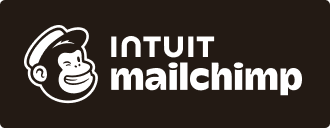We docked on time, on Friday 5th July, and through passport control within 45 minutes. It was all so easy and arrived at our platt before 1pm. The first days are always busy but today we only had a two hour dry spell to erect the tent. There was heavy rain during night but the 5 metre bell tent provided warmth and a great shelter. It does the job!
It was a ‘wow’ factor we experienced when we saw the explosion in the natural growth. The range of greens were brightened by the Red Campions and an amazing number of tall Foxgloves —some being in excess of 2 metres. It was said that it was a great Foxglove year in Cornwall for that flower. But that is not all as there are layers of plant life co-existing but, I suspect, it will be the strongest and most suited to the environment that will succeed the best. I love it from the colours, to the movement of the branches in the trees and the constant movement of clouds chasing the blue around. Boticanally speaking there is a universe to be explored at leisure and to be revered.
The wild is definitely in charge. It is the boss and we must go with that notion. I have abandoned many ideas in terms of what can be planted but my basic focus is to encourage, even sow some seeds, such as red and white clover around the fruit trees we planted in January. I have added sage seeds too as rabbits (apparently) don’t like the smell/taste or whatever. The temporary plastic bottle guards placed around each tree I have replaced with proper plastic or metal wire netting. The three eating apple trees have made good growth but the crab apple and plum seem to be struggling a tad. The two Filberts or nuts to you are occupying two shady corners and are putting on very good growth.
The plethora of natural vegetation hides many things. Self seeding Buddleias, Hypericum or St, John’s Wort and wild Strawberries have shown themselves. I try and preserve what we do have growing and endeavor to add as many insect loving plants that we can. Buck Wheat and Clover seeds will be sown now the rain has set in. I have been told that August is Cornwall’s wettest month. I remember one August when the rain continued throughout the month. Not much fun that summer.
On my hit list are Lavender which are a definite magnet for Bees. I will also take hazel cuttings from local trees that are in a hedgerow. This can provide a food source for mice and other small mammals. Privet is also growing locally and the white flowers are another source of nectar.
We have Hawthorn and Elder bushes well established that provide winter berries on an annual basis. I will propagate both of these. I may even add a Rowan at a later date. Blackthorn is an ever present bush that will provide Sloes, although not every year. (They are good in Gin).
There are two plants where their existence has been questioned and where attempts have been made to eradicate them. Local people have ‘gone-over-the-top’ and ripped Himalayan Balsam out. Okay, it is not indigenous and with their explosive seed heads this plant can easily spread. Last summer I observed bees foraging on them. They are a very good source of nectar and I will let them grow. Ragwort, has had bad press over the years, is growing all around us and I will garner a bunch or two to hang and let the seeds fall. It is odd how ideas and thoughts change.
It is the foraging plant for the Cinnabar Moth caterpillar and supports others too. A bright yellow flower head that is obvious to all.
In February 2023 we were in a Herefordshire Nature Trust site at Sturts. We found acorns which were potted up in Croydon and transferred to open ground on the Platt last summer. Three young oaks are doing well. A bit of Hereford transposed to Cornwall. It brought a smile to our lips.













